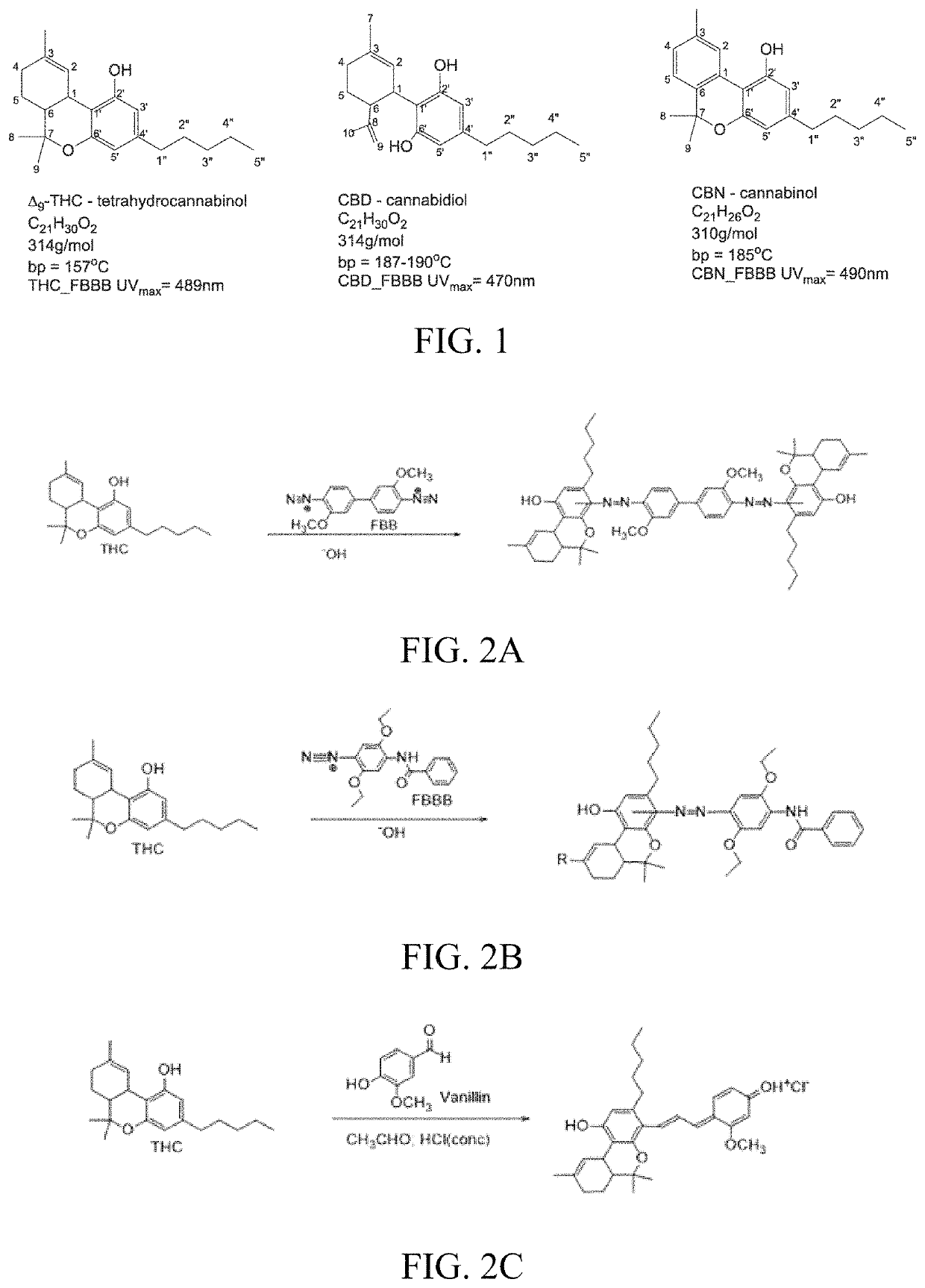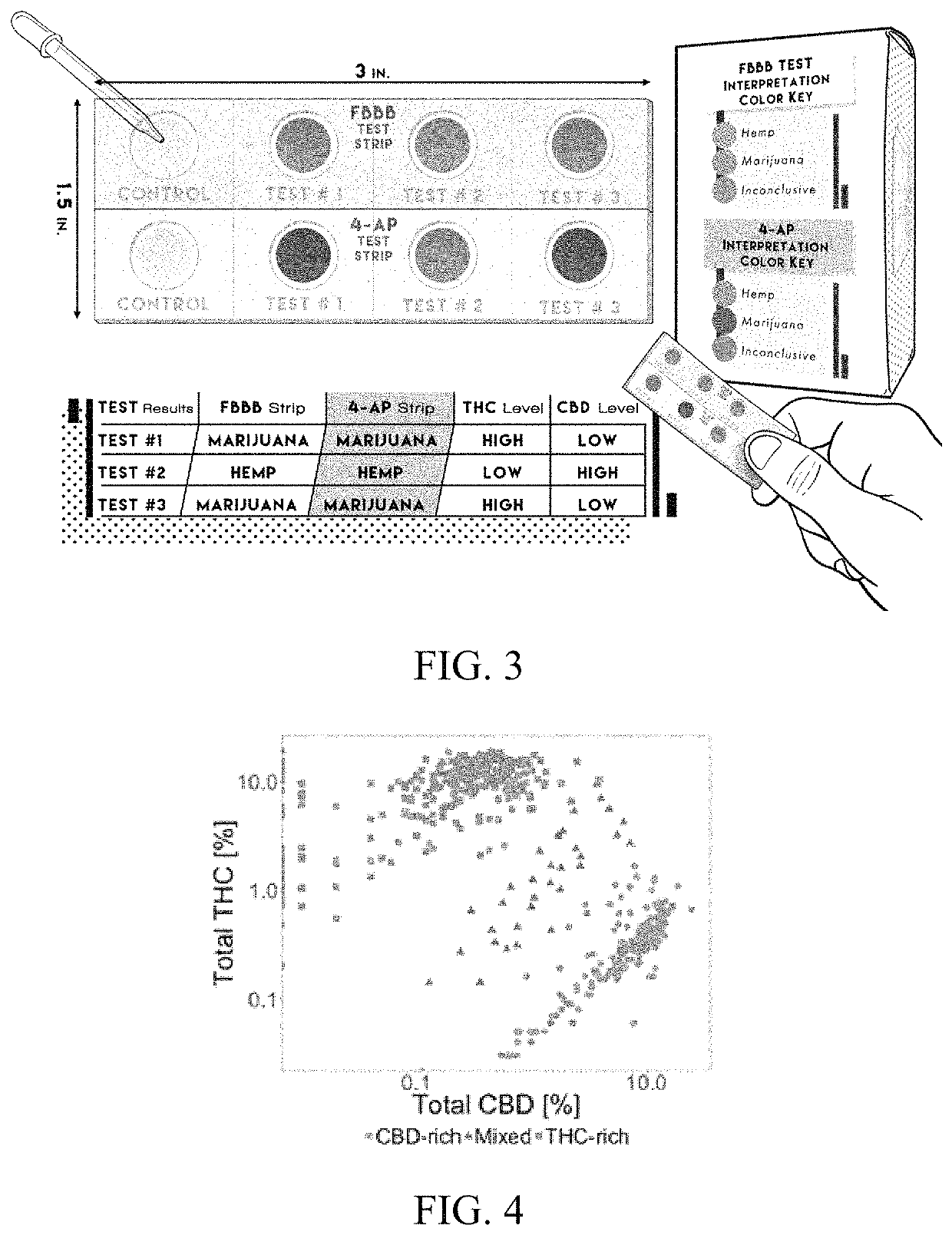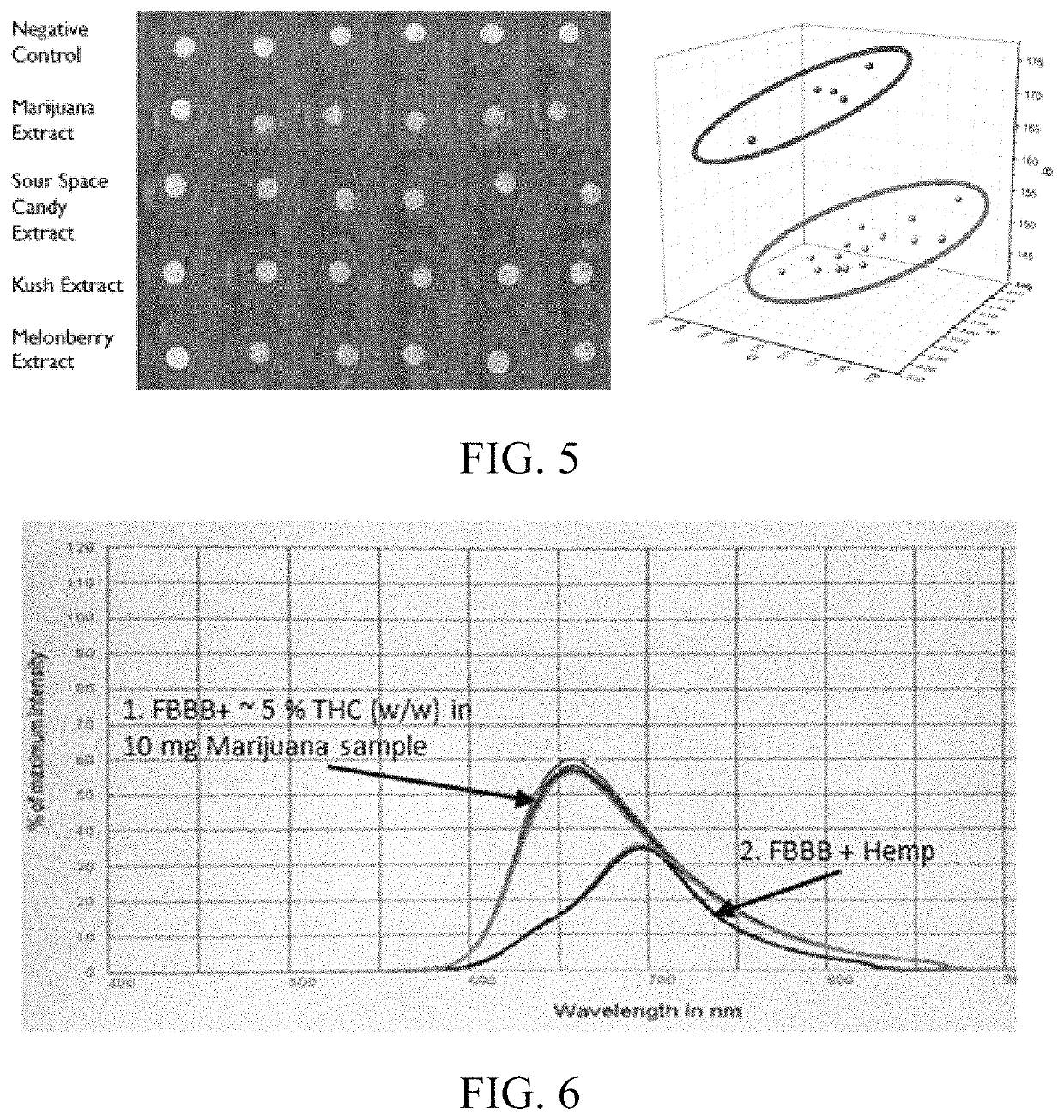Materials and methods for field testing of cannabis samples
a technology for field testing and cannabis, applied in material analysis, instruments, measurement devices, etc., can solve the problems of ineffective testing to differentiate between hemp and marijuana, inexpensive and easy to use, and the effect of reducing the cost of testing
- Summary
- Abstract
- Description
- Claims
- Application Information
AI Technical Summary
Benefits of technology
Problems solved by technology
Method used
Image
Examples
example 1
Strip
[0145]A colorimetric test strip can be used to visually differentiate between hemp and marijuana and can then, optionally, be subsequently transported to a laboratory for confirmatory analysis using GC-MS by direct thermal desorption of the substrate using a probe. The Fast Blue BB (FBBB) reaction with THC has been demonstrated to be sensitive (˜50 ng detection) and produce a discernable color difference from the FBBB reaction with other cannabinoids, in particular cannabidiol (CBD). A depiction of the test strip combining two complementary reactions (FBBB and the 4-aminophenol) with both high THC content plant extracts and low THC content (but high CBD content) extracts is shown in FIG. 3.
[0146]The strip (FIG. 3) contains small reaction wells measuring between 3 mm-6 mm in diameter each. These wells contain circular sorbent-coated glass microfiber substrate materials (CMV-A and CMV-B) for the reactions and to deposit unreacted target analytes for subsequent thermal desorption ...
example 2
ric Tests of Different Extracts
[0151]A 5 mm spot of the PDMS-coated glass substrate was pre-loaded with FBBB reagent and reacted with extracts from a marijuana plant (high THC) and with the extracts from three different commercially available hemp plants (low THC but high CBD content). FIG. 5 (left) illustrates the color differences between the product chromophores resulting from the reactions within the spot well on the substrate for the two types of cannabis extracts. FIG. 5 (right) shows a scatter plot of the RGB codes equivalent to the red and orange colors obtained from the Marijuana+FBBB chromophore and Hemp+FBBB chromophore, respectively. Mass loadings of THC and CBD as low as 100 ng produce a color change. These limits of detection are much lower than the expected concentrations of ˜5-15% THC (w / w) in marijuana plants when ˜5 mg of plant material is extracted with 0.5 mL of ethanol or similar solvent and a 10 uL of the ethanol extracts are added to the pre-loaded substrate f...
example 3
ric Tests in Different Supports
[0153]The color reaction from FBBB and cannabinoids (Δ9-THC, CBN, and CBD) was performed by observing a reddish color change with the naked eye in three-different strips support paper, CMV-A, and CMV-B. For strips of filter paper, the Δ9-THC, CBN, and CBD were detected at 50 ng mass loadings.
[0154]While using the strips of CMV-A and CMV-B mass loadings of 100 ng for all cannabinoids tested were detected when compared with the blank. In the fully assembled, multi-strip CMV-A and CMV-B devices, the reddish color was observed with 500 ng mass loading of each compound.
[0155]The presumptive test commonly used by many forensic laboratories to identify marijuana is the Duquenois-Levine test with reported detection limits of 5 μg (5000 ng) for THC. The polar characteristics of the paper, due to hydroxyl groups present in cellulose, caused more diffusion in methanolic solutions utilized in all experiments while the CMV-A had less diffusion between all of the su...
PUM
| Property | Measurement | Unit |
|---|---|---|
| MW | aaaaa | aaaaa |
| vibrational energy | aaaaa | aaaaa |
| vibrational energy | aaaaa | aaaaa |
Abstract
Description
Claims
Application Information
 Login to View More
Login to View More - R&D
- Intellectual Property
- Life Sciences
- Materials
- Tech Scout
- Unparalleled Data Quality
- Higher Quality Content
- 60% Fewer Hallucinations
Browse by: Latest US Patents, China's latest patents, Technical Efficacy Thesaurus, Application Domain, Technology Topic, Popular Technical Reports.
© 2025 PatSnap. All rights reserved.Legal|Privacy policy|Modern Slavery Act Transparency Statement|Sitemap|About US| Contact US: help@patsnap.com



